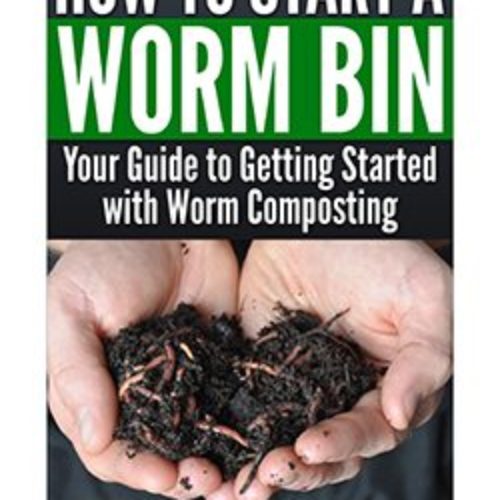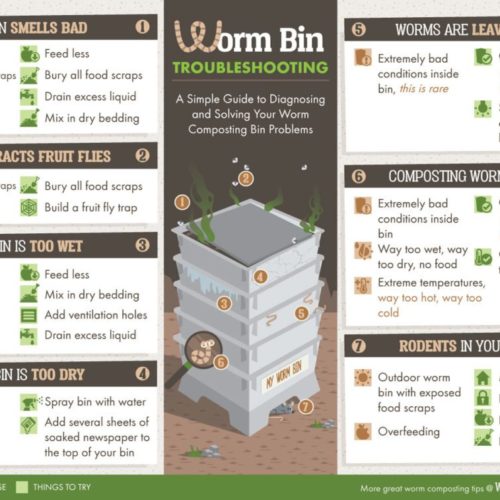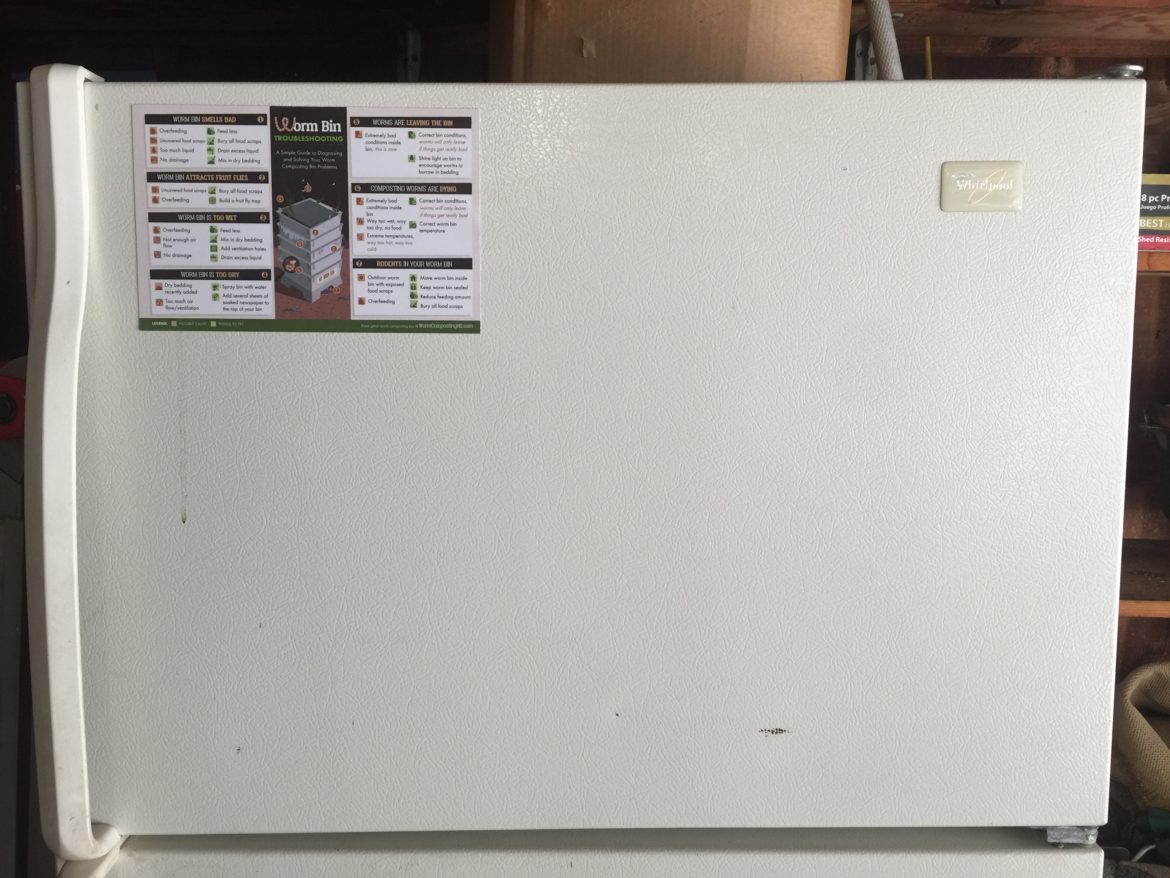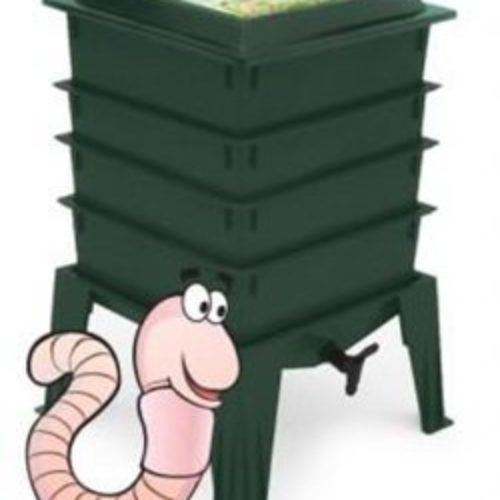Learn the Best Temperature for your Composting Worms and How to Raise or Lower the Temperature Inside your Worm Bin

Your composting worms have three jobs: eat, poop, and make babies. It’s a good life if you can get it. You’re job as the worm farmer is to make sure the conditions are right for the worms to do their thing. Regulating the temperature in a worm bin is essential to maximize the worms efficiency. In this article, you will learn the ideal temperature range for your red wiggler worms and how to raise or lower the temperature inside your worm bin. If you don’t already have one, purchase a simple compost thermometer so that you can accurately monitor the temperature of your worm composting bin.
What is the Ideal Temperature for a Worm Composting Bin?

This is easy to remember. Composting worms like the same temperatures that we do. There ideal range is 60-80 degrees Fahrenheit. Go to your worm bin. If you are cold, so are they. If you are hot, so are your worms. While your composting worms will tolerate temperatures outside this ideal range, do your best to keep the temp within 60-80 degrees F because this is when your worms are most productive. See below for tips on raising or lowering the temperature in a worm bin.
What are the Extreme Temperatures that Composting Worms will Tolerate?
- A Cold Worm Bin – When the temperature in a worm bin starts to drop below 60 degrees F, your worms will start eating less and reproducing less. As the temperature continues to drop they will go into survival mode. If the worm bin temperature drops below 40 degrees, the worms will start to die off.
- A Hot Worm Bin – If the worm bin temperature rises over 80 degrees, the worms will start to eat and reproduce less. If it gets over 95 degrees, your composting worms will either start to die or will leave in a mass exit (one of every worm composters worst nightmares!). Be careful not to overfeed your worms. If you add too much food scraps to a large worm bin it will become a hot compost pile and create its own heat, cooking your worms for the inside out. For information on the amount you should feed your worms read: Feeding Your Worms
Why Not Keep your Worm Bin Inside?
If worms prefer the same temperatures that we do, why not keep your worm bin inside? One of the benefits of worm composting is that you can easily keep your worm bin in your kitchen closet, garage, or even under your work at desk (like I do!). If your worm bin is too large to keep inside or your spouse is dead set against it, there are ways to worm compost outdoors even in the winter or the heat of the summer. Read below for tips on raising and lowering worm bin temperatures.
How to Lower the Temperature in a Worm Bin
Worm composting outdoors in the heat of the summer can be a challenge especially if you live in a part of the world where it gets really hot. If you live on the equator please consider keeping your worm bin indoors. If you live in a milder summer climate try some of the below techniques to lower the temperature in a worm bin.
- Keep your worm bin in the shade – Duh.
- Increase air flow – This can be done by drilling more holes in your worm bin or simply removing the lid for a period of time. If you choose to remove the lid, watch out for the family dog digging in the bin or, like at my house, the family chickens helping themselves to a snack.
- Make sure the bedding stays moist – Composting worms need moist carbon bedding to keep their skin moist so that they can breathe. Heat dries out bedding quickly. Use a watering can or spray bottle to keep the bedding wet. As the water evaporates it also lowers the temperature of the worm bin.
- Use a fan – Open the lid your worm bin and point a fan at the bedding. The dramatically increased airflow will increase evaporation and lower the temperature. If you use a fan, be sure to keep the bedding moist. For tips on maintaining the correct moisture level read: Moisture Level of a Worm Bin
- Fan plus a wet towel – For added cooling effect from evaporation, drape a wet towel over the top of your worm bin with the lid removed.
- Ice – When your worm bin is way too hot (like when you have accidentally turned it into a hot compost pile) throw some ice on top. Be careful adding ice to an indoor worm bin. Remember adding ice is adding water that will need to run out somewhere.
- Install a fan – It takes a little rigging but a small computer fan works well. Install it in the lid of your worm bin to aide in air flow. This approach works best in a larger, continuous flow through worm composting bin. You will need an electrician friend to help you with the basic wiring. Want to get really fancy? Add a thermostat that can turn the fan on when it gets over a certain temperature.
How to Raise the Temperature in your Worm Composting Bin
Worm composting outdoors in the winter is possible, but probably not if you live in Antarctica. Before you set up a winter worm compost bin, think about your climate and average temperatures. Experienced worm farmers willing to build a large outdoor winter worm bed have had great success even in a place as cold as Canada. Try the below tips for raising the temperature in a worm bin.
- Keep the lid on – If your winter worm bin has a lid, keep it on to trap heat in. If it doesn’t, use a tarp to cover the worm bed.
- Provide insulation – Insulation can be as simple as surrounding your worm bin with hay bales or as complex as attaching sheets of blue board insulation foam. Any way you choose to do it, providing insulation will help keep your worms warm. I transformed a broken chest freezer into a worm bin. It works great and has built in insulation! Old coolers work well too.
- Build a large winter worm composting bed – I have found that larger worm composting systems are less susceptible to atmospheric changes than smaller systems. Therefore it is easier to regulate the temperature of a larger worm composting system. This is especially true for keeping a large system warm in cold weather. You can add lots of food scraps at one time to a section without worrying about hurting your worms. Because the system is large, worms can move around and find a spot that is closer to their ideal temperature.
- Heater – Use a Worm Bin Heater – A seed starting heating mat like this one that I use makes a great worm bin heater.

Worm Bin Heater Just lay the mat on top, plug it in and your worms will stay nice and toasty in cold weather.
VIVOSUN Durable Waterproof Seedling Heat Mat Warm Hydroponic Heating Pad 10″ x 20.75″ $12.99
For more tips on keeping your worm composting bin warm in a cold climate read: Worm Composting in the Winter
If this article was helpful for you, please share it with your friends. Thanks. Happy worm composting!









